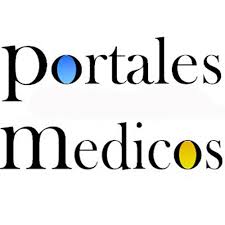Oclusión bilateral de ambas carótidas internas “hidranencefalia”. Reporte de un caso
Bilateral occlusion of both internal carotids ¨hydranencefaly¨. A case report
Resumen
Objetivo: Identificar los hallazgos ecográficos encontrados en la hidranencefalia y correlacionarlos con los hallazgos posnatales. Caso clínico: se realizó ecografía detallada a paciente que acudió a la Unidad de Perinatología “Dr. Freddy Guevara Zuloaga”, Hospital Universitario de Caracas, Venezuela, cursando con embarazo de 20 semanas por fecha de última menstruación. Se encontró a nivel ecográfico, en corte axial de calota fetal en los planos transventricular, transtalámico y transcerebelar, línea media, cerebro medio y fosa posterior presentes, ausencia del cavum del septum pellucidum, de astas anteriores de los ventrículos laterales, tálamos y hemisferios cerebrales; con imagen anecoica en región de hemisferios correspondiendo a líquido cefalorraquídeo, en el resto de la evaluación sistemática no se evidencia ninguna alteración ecográfica que se correlacione con los hallazgos anteriormente mencionados. Paciente acude por rotura prematura de membranas ovulares y sangrado a través de genitales a las 22 semanas de gestación, donde se obtiene feto masculino, sin signos vitales, por vía vaginal, peso 435g, se realizan estudios de anatomía patológica, donde se evidencia a la apertura del cráneo fetal salida de líquido cetrino con ausencia de ambos hemisferios y conservación de tallo encefálico. Conclusiones: En vista de los hallazgos ecográficos y de anatomía patológica se concluye caso como patología del sistema nervioso central: hidranencefalia; destacando la importancia de la evaluación perinatal sistemática de primer y segundo trimestre del embarazo, ya que permite la identificación de algún hallazgo o anormalidad fetal, y de esta manera, ofrecer una adecuada asesoría para gestaciones futuras.
Objective: Identify the ultrasound findings found in hydranencephaly and correlate them with postnatal findings. Clinical case: a detailed ultrasound was performed on a patient who attended the Perinatology Unit ¨Dr. Freddy Guevara Zuloaga¨, Hospital Universitario de Caracas, Venezuela, having a pregnancy of 20 weeks by date of last period. It was found at the ultrasound level, in axial section of the fetal skull in the transventricular, transthalamic and transcerebellar planes, midline, midbrain and posterior fossa present, absence of the cavum of the septum pellucidum, anterior horns of the lateral ventricles, thalamus and cerebral hemispheres; with an anechoic image in the region of the hemispheres corresponding to cerebrospinal fluid, the rest of the systematic evaluation does not show any echographic alteration that correlates with the aforementioned findings. Patient comes due to premature rupture of ovular membranes and bleeding through the genitals at 22 weeks of gestation, where a male fetus is obtained, without vital signs, by vaginal route, weighing 435g, pathological anatomy studies are performed, where it is evidenced at opening of the fetal skull outlet of sallow fluid with absence of both hemispheres and preservation of the brain stem. Conclusions: In view of the ultrasound and pathological findings, the case is concluded as a pathology of the central nervous system: hydranencephaly; highlighting the importance of systematic perinatal evaluation of the first and second trimesters of pregnancy, since it allows the identification of any finding or fetal abnormality and thus offer adequate advice for future pregnancies.
Palabras clave
Texto completo:
PDFReferencias
Barrón, M. Á., Hernández, C., Serna, R. y Torres, J. (2016). Hidranencefalia congénita: reporte de un adolescente en el norte de México. Revista Archivo Médico de Camagüey, 20(5), 546-552. http://scielo.sld.cu/scielo.php?script=sci_arttext&pid=S102502552016000500012&lng=es&tlng=es.
Castro, G. M., Villegas, C., Márquez, D., Milano. A. y Martínez, B., (2022). Prevalencia de las malformaciones congénitas en la Unidad de Perinatología del Hospital Universitario de Caracas. Revista obstetricia y ginecología Venezuela, 82(2), 167-178. https://doi.org/10.51288/00820206
Gezmu, A. M., Shifa, J. Z, Kgwarae, C., Siamisang. A. (2020). Hydranencephaly in Neonate: A Literature Review. Neurol India, 68, 199 - 201. https://doi.org/10.4103/0028-3886.279698
Laurichesse-Delmas, H., Beaufrère, A. M., Martin, A., Kaemmerlen, A. G., Déchelotte, P. & Lémery, D. (2002). First-trimester features of Fowler syndrome (hydrocephaly-hydranencephaly proliferative vasculopathy). Ultrasound in obstetrics & gynecology: the official journal of the International Society of Ultrasound in Obstetrics and Gynecology, 20(6), 612 - 615. https://doi.org/10.1046/j.1469-0705.2002.00830.x
Lacunza P., Rommel O. y Correa, W. (2014). Hidranencefalia como presentación más severa de apoplejía cerebral fetal: a propósito de dos casos. Revista Peruana de Ginecología y Obstetricia, 60(2), 183-188
http://www.scielo.org.pe/scielo.php?script=sci_arttext&pid=S230451322014000200013&lng=es&tlng=es.
Moore, K. y Persaud, T. (1999). Embriología Clínica. Sexta Edición. México D.F:McGraw-Hill Interamericana.
Naranjo J., y Ruiz, M. (2017) Hidranencefalia y malformación del sistema nervioso central tipo porencefalia, esquizencefalia a labio abierto, en recién nacido prematuro de 34 semanas: a propósito de un caso clínico.
http://repositorio.puce.edu.ec/bitstream/handle/22000/16057/HIDRANENCEFALIA%20Y%20MALFORMACIÓN%20DEL%20SISTEMA%20NERVIOSO%20CENTRAL%20TIPO%20PORENCEFALIA%2C%20ESQUIZENCEFALIA%20A%20.pdf?sequence=1&isAllowed=y.
Pavone, P., Praticò, A. D., Vitaliti, G., Ruggieri, M., Rizzo, R., Parano, E., Pavone, L., Pero, G. & Falsaperla, R. (2014). Hydranencephaly: cerebral spinal fluid instead of cerebral mantles. Italian journal of pediatrics, 40, 79. https://doi.org/10.1186/s13052-014-0079-1
Sandoval, J. I. & De Jesús, O. (2021). Hydranencephaly. In StatPearls. https://www.ncbi.nlm.nih.gov/books/NBK558991/.
Sedain, G. y Rajbhandari, B. (2020). Hidranencefalia: conocimientos sobre fisiopatología y manejo. Nepal Journal of Neuroscience, 17(1), 5-9. https://doi.org/10.3126/njn.v17i1.28336
Enlaces refback
- No hay ningún enlace refback.
Depósito Legal Electrónico: ME2016000090
ISSN Electrónico: 2610-797X
DOI: https://doi.org/10.53766/GICOS
| Se encuentra actualmente registrada y aceptada en las siguientes base de datos, directorios e índices: | |||
 | |||
 |  |  |  |
 |  | ||
 |  |  |  |
 |  |  |  |
 |  |  |  |
 |  | ||
![]()
Todos los documentos publicados en esta revista se distribuyen bajo una
Licencia Creative Commons Atribución -No Comercial- Compartir Igual 4.0 Internacional.
Por lo que el envío, procesamiento y publicación de artículos en la revista es totalmente gratuito.

